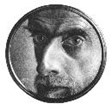Sorry, nothing is currently available in the category.

Maurits Cornelis Escher (17 June 1898 – 27 March 1972), commonly known as M.C. Escher, was a famous Dutch fine art artist who was born in Leeuwarden, Friesland. His academic performances in both elementary and primary school were below average. Escher however had a clear love for music and carpentry. During his high school education, he received drawing instructions from F.W. van der Haagen. The lessons inspired him to the School of Architecture and Ornamental Design in Haarlem from where he graduated in 1922. Escher’s time in college was also rich with lessons from reputable art instructor Samuel Jessurun de Mesquita. Mesquita’s intuitive instructions influenced Escher's growth in graphic art. After completing his studies at the college, Escher moved to Italy and settled in Rome. For the next 10 years, he lived in Italy, traveling to different parts of the country, learning and seeing new things. He would later move to Switzerland, Brussels, Barn and finally to Holland, where he passed on at 73.
Escher’s subjects at the beginning of his art career were mainly landscapes and insects. Later on, he began to explore other subjects, imagining things and putting them down in sketches before settling down to paint. His main media were lithographs and woodcuts. Besides the two media, he also has a few Mezzotints that are regarded as masterpieces of the not so common technique. His works often displayed mathematical relations among different shapes, spaces, and diverse figures. Escher also found a unique way of portraying interlocking forms by exploring lights and darks to give the most expressive dimensions. Currently, there are several galleries that sell M.C. Escher framed art. There are also different museums and collectors that display his creative works across the globe.












